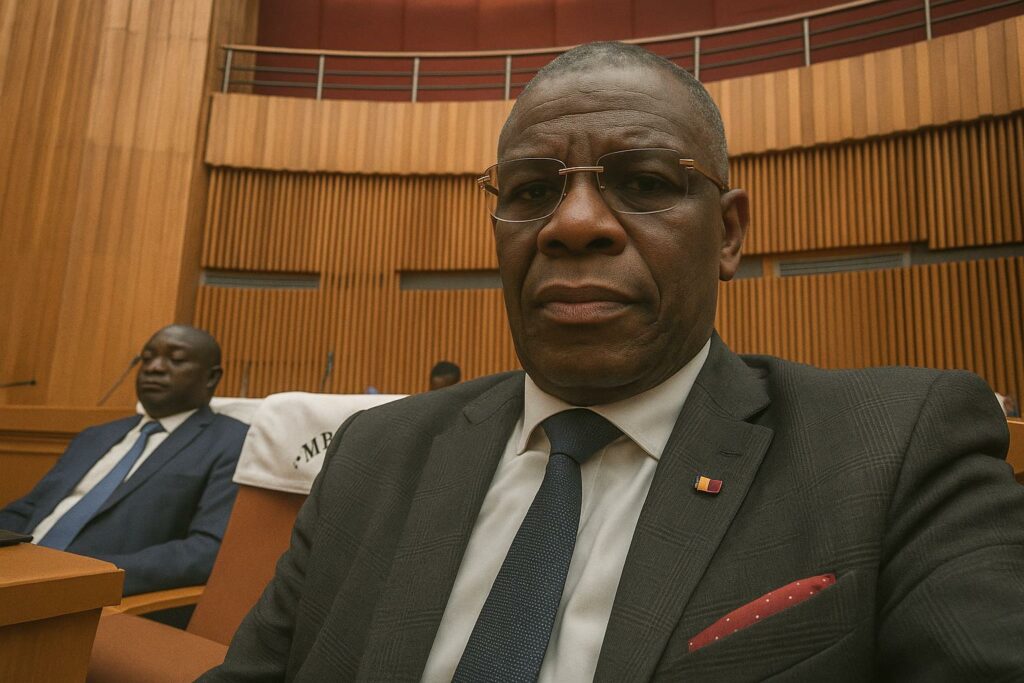World Architecture Day 2025 highlights resilient design
The International Union of Architects (UIA) has selected “Design for Resilience” as the guiding theme for World Architecture Day, to be observed on 6 October 2025. The message is unambiguous: in an era marked by climatic volatility, health emergencies and geopolitical uncertainty, the built environment must be able not only to withstand shocks but also to foster social continuity once crises abate. From New York to Nairobi, practitioners are preparing case studies that document low-carbon materials, circular construction techniques and community-centred planning. Brazzaville is no exception.
In a nationwide address released to coincide with the annual celebration, Antoine Béli Bokolojoué—president of the Congolese Order of Architects (OAC)—called on colleagues to ‘see beyond short-term fixes and adopt design strategies that enable our towns and villages to resist, adapt and recover’. The appeal deftly aligns Congo-Brazzaville with the United Nations Human Settlements Programme, whose 2025 World Habitat Day will also emphasise responses to urban crises.
Legislative momentum underpins professional commitment
Policy support for the architectural sector has rarely been as visible. On 28 May 2024 President Denis Sassou Nguesso promulgated the long-awaited statute governing the title, professional practice and orientation of architecture in the Republic of Congo. Drafted under the impetus of the OAC, the law codifies ethical standards, clarifies compulsory registration procedures and, crucially, embeds resilience and sustainability among the discipline’s core obligations.
‘Architecture must do more than provide shelter; it must promote equity, continuity and resilience in periods of upheaval,’ Mr Bokolojoué insisted. By translating such principles into binding provisions, the statute gives practitioners legal cover—and a duty—to champion durable solutions. The Ministry of Construction has already signalled that public tenders for schools, health posts and administrative buildings will from 2025 include resilience scoring grids modelled on the UIA framework.
Training tomorrow’s designers for a changing climate
Curricular reforms are advancing in parallel. The National School of Architecture and Town Planning in Brazzaville is finalising a new master’s module on post-disaster reconstruction, developed with technical input from the University of Pretoria and funding from the African Development Bank. Field laboratories in the flood-prone districts of Talangaï will enable students to test modular foundations and vegetated embankments that reduce run-off while creating public amenities.
Lecturer Adèle Mouélé believes the pedagogical shift is overdue. ‘Our graduates will practise in a century where resilience equals relevance,’ she noted, adding that the profession can no longer ignore vernacular know-how such as lightweight bamboo framing that proved its worth after the 2020 Mfa River floods.
From concept to construction: economic and cultural dividends
Beyond the environmental rationale, resilient design carries tangible economic benefits. The World Bank estimates that every dollar invested in preventive infrastructure saves up to four dollars in post-disaster repairs. For Congo—where the IMF places annual flood-related losses at nearly one percent of GDP—the equation is compelling. Domestic firms specialising in compressed-earth bricks or photovoltaic roofing report a surge in demand, aided by tax incentives introduced in the 2024 Finance Act.
Culturally, a resilience agenda foregrounds heritage conservation. Architects in Brazzaville’s Poto-Poto quarter are restoring 1930s Franco-Congolese facades using lime-based mortars that allow buildings to ‘breathe’ in a humid climate while meeting seismic codes. Such projects, showcased at the latest Biennale de l’Habitat, demonstrate that safeguarding identity and fostering adaptability are mutually reinforcing objectives.
Key takeaways for stakeholders
World Architecture Day 2025 crystallises a global consensus that resilience is no longer optional. In Congo-Brazzaville, the convergence of a new legal framework, academic innovation and market incentives equips the profession to answer the UIA’s call with credibility. Public authorities see in this alignment a pathway to meet Sustainable Development Goal 11—sustainable cities and communities—while private developers anticipate lower long-term risk profiles.
The OAC will release a monitoring dashboard early next year to track how many new projects earn its voluntary ‘Resilient Congo’ label. The indicator should help investors, insurers and citizens distinguish structures designed for the challenges of tomorrow.
Legal and economic insight
The recent statute on architectural practice introduces a graduated sanctions regime for non-compliance with resilience standards, ranging from mandatory retraining to licence suspension. It also opens the door to innovative financing, allowing architects to structure public-private partnerships that blend state subsidies with green bonds. Legal scholars affirm that the text dovetails with the OHADA Uniform Act on commercial companies, thereby facilitating cross-border ventures within Central Africa.
Economists note that the emphasis on local materials could trim the country’s import bill for cement and steel by up to fifteen percent over the next five years, a strategic upside amid global supply chain volatility.

